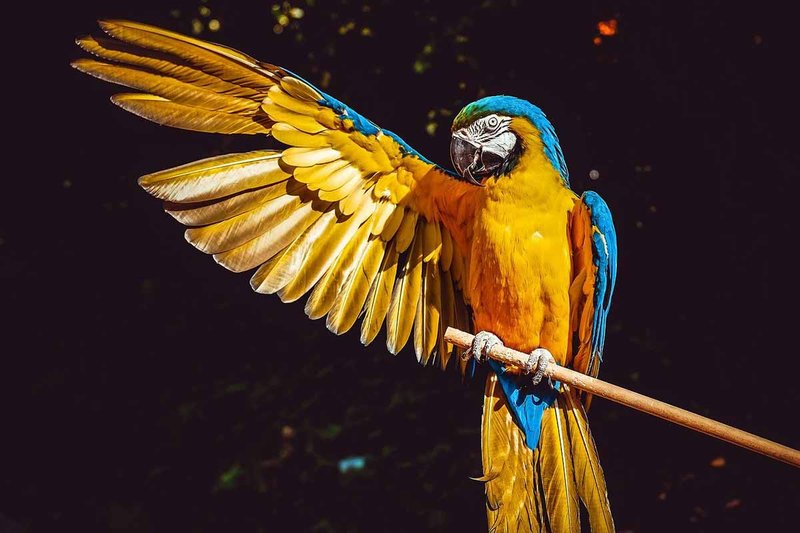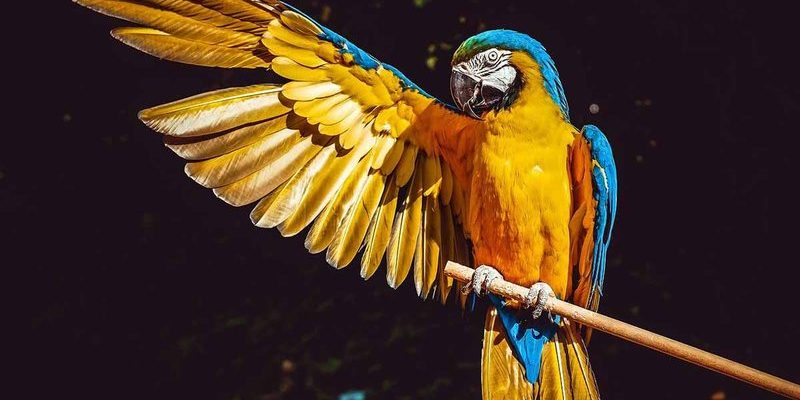
When you pause to consider the cultural significance of parrots, it’s fascinating to see how these birds have inspired countless stories, art, and traditions. From ancient civilizations to modern societies, parrots have helped shape how we view nature and connection. Their beauty, intelligence, and sometimes quirky behavior make them perfect symbols and characters, often teaching lessons about love, loyalty, and freedom. So, let’s dive into the vibrant world of parrots and uncover what makes them such a compelling part of various cultures and folktales.
Parrots in Mythology and Legend
Different cultures have crafted their own tales around parrots, making them central characters in countless myths and legends. For instance, in Hindu mythology, the parrot is often seen as a symbol of love and devotion. Think of Kama, the Hindu god of love, who is sometimes depicted riding a parrot. This association highlights how deeply intertwined parrots are with themes of romance and affection in ancient traditions.
Similarly, in many native South American cultures, parrots are viewed as messengers of the gods. They’re believed to convey wisdom and guidance, often appearing in stories as creatures that bridge the gap between the human world and the divine. You might find *Amazonian tribes* telling tales of how parrots helped their ancestors by sharing crucial knowledge about survival in the jungle. These stories not only reflect the beauty of the parrot but also underscore their importance in the lives of the people who revere them.
In the Pacific Islands, parrots are often featured in folklore as guardians of the forest, protecting the natural world from harm. Their vibrant colors and melodic calls are seen as gifts from the spirits, reminding humans of the beauty in nature. This protective role adds another layer to their cultural significance, showing how parrots embody both beauty and responsibility.
Parrots as Cultural Symbols
Parrots symbolize different concepts across various cultures and can represent everything from intelligence to freedom. In African traditions, for example, the parrot is often linked to wisdom. Many tribes believe that the parrot possesses the ability to understand human emotions and thoughts, which can lead to insightful guidance.
In contrast, cultures in Australia view the parrot as a symbol of communication and social interaction. Their ability to mimic human voices creates a unique bond between these birds and people. It’s almost like they’re the social butterflies of the animal kingdom, effortlessly bridging gaps and creating connections wherever they go.
Over in Caribbean cultures, the parrot stands for freedom and resilience. Often depicted in artwork, these birds carry the spirit of liberation, reminding communities of the importance of independence and self-expression. The colorful feathers of parrots also represent the vibrancy of life, echoing the colorful festivals and celebrations cherished within these cultures.
Parrots in Art and Literature
Have you ever noticed how often parrots appear in art and literature? From ancient pottery to vibrant paintings, these birds have inspired countless artists throughout history. In European art, for example, parrots are sometimes depicted alongside still-life arrangements, symbolizing exotic beauty and the wonders of distant lands. Their bold colors and striking features draw the eye, making them popular subjects.
In literature, parrots often symbolize wisdom or serve as comic relief. You might come across characters in novels who own parrots that mimic key phrases or sayings, adding layers of humor or wisdom to the storyline. Think about how they might repeat important lines, almost nudging characters toward pivotal moments of realization!
Even in children’s stories, parrots frequently teach lessons about friendship and loyalty. A story featuring a parrot can symbolize the importance of being true to oneself and others. This connection between birds and narratives underscores how deeply rooted parrots are in our collective imagination.
Parrots and Their Role in Traditional Practices
Many cultures incorporate parrots into traditional practices, highlighting their significance. In some indigenous cultures, specific parrot species are revered and protected, reflecting a deep connection between the birds and the community’s beliefs. For instance, rituals may involve songs or dances that celebrate the parrot, emphasizing its role as a spirit guide.
In Australian Aboriginal culture, certain parrot species are integral to storytelling. The people may recount tales of how these birds helped ancestors navigate their land, passing wisdom down through generations. The presence of the parrot in these narratives serves as a potent reminder of the interplay between humans and the natural world.
Additionally, in Asian cultures, particularly in Malaysia, parrots are often associated with festivals and celebrations. They are sometimes released during ceremonies to symbolize good luck and prosperity. This practice showcases a blend of reverence for nature and community spirit, as families come together to celebrate the beauty of life.
Conservation Efforts and Cultural Connections
As much as parrots are celebrated in folklore, many species face significant threats due to habitat loss and illegal trade. The loss of these vibrant creatures can impact not only ecosystems but also cultural practices and stories that rely on them. It’s like losing a chapter of a beloved book; something important is missing.
Various organizations are working hard to preserve parrot populations and their habitats. Conservation initiatives often involve local communities, emphasizing the cultural ties people have with these birds. By engaging communities in conservation efforts, there’s a greater chance of success because people protect what they love.
Restoring forests and creating awareness about the ecological role of parrots can help save these remarkable birds. It’s encouraging to see how cultural appreciation can lead to tangible actions that preserve both the parrots and the stories they inspire.
The Future of Parrots in Culture
As we move forward, the role of parrots in local cultures and folklore will continue to evolve. With globalization, we see a blending of traditions, where parrots from one culture inspire stories in another. This cross-pollination of ideas can help keep the spirit of these birds alive in new and interesting ways.
However, it’s crucial to ensure that traditional practices are respected and safeguarded. Cultural heritage and biodiversity are intertwined, and as we celebrate the parrot’s role in folklore, we must also commit to protecting their natural habitats.
Parrots will always be more than just beautiful birds; they’re symbols of connection, wisdom, and a vibrant tapestry of stories. By appreciating and preserving their role in our cultures, we not only honor these unique creatures but also strengthen our own bonds to nature and each other.
In conclusion, the parrot’s journey through various cultures and folklore is an incredible reminder of how interconnected we all are. These delightful birds not only brighten our skies but also enrich our stories and traditions, inspiring us to cherish the world around us. So, let’s continue to celebrate the parrot, ensuring that its legacy lives on for generations to come!

